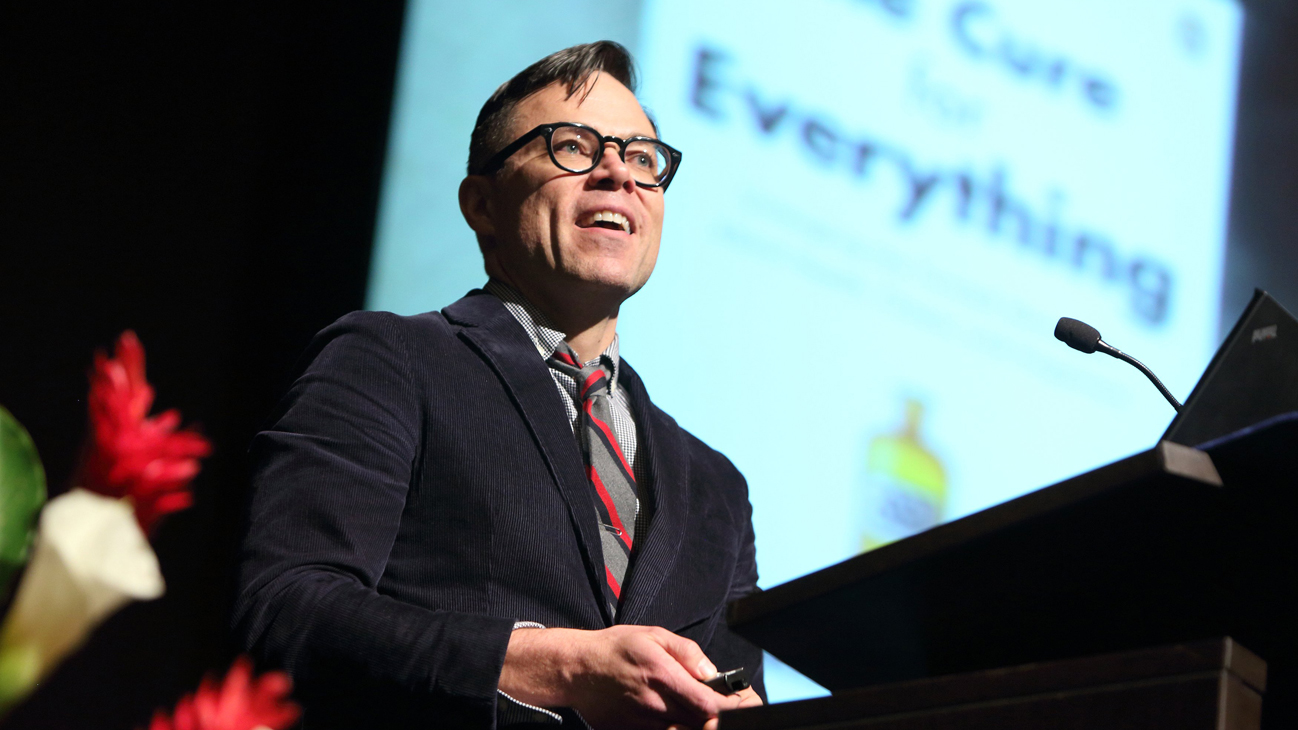Professor Timothy Caulfield is an unrivaled communicator who debunks myths and assumptions about innovation in the health sector—from research on stem cells to diets to alternative medicine—for the benefit of the public and decision-makers. He is a Canada Research Chair in Health Law and Policy, and a Professor in the Faculty of Law and the School of Public Health at the University of Alberta. He has been the Research Director of the Health Law Institute at the University of Alberta since 1993. Caulfield is also host of A User’s Guide to Cheating Death, a miniseries airing on VisionTV this month.
He recently wrote in The Globe and Mail about the erosion of a middle ground in contemporary scientific, specifically health-science, debate.
Here’s some of that piece:
Increasingly, it feels like there is no middle ground. There is no space for a reasoned discussion. No matter what the topic, you need to be either for it or against it. And this polarized posturing seems particularly common in the realm of health-science controversies.
Whether we are debating the potential harms of e-cigarettes, the value of organic food, flu vaccine policy or even the fitness merits of yoga, you are now expected to take a definitive and unwavering position. Any hesitation to consider the merits of the available science is pounced on as a sign of weakness and evidence that you are clearly in the pocket of Big Tobacco, Big Ag, Big Pharma or Big Yoga.
In this age of polarized discourse, we can’t talk about stuff. And this is a problem.
Last week, a study was published that found an association between fluoride in the urine of pregnant women and lower IQs in children. Not surprisingly, the study got a lot of attention from the media and was, almost immediately, used by anti-fluoride advocates as proof that we need to remove fluoride from our water supply. It is, some argued (using a tone that fits well with the spirit of polarization discourse), “the biggest moment in the history of this debate.” Others suggested “it must spell the end of fluoridation worldwide.”
It is rare that one study, even one that is methodologically sound, will change how health policy should play out. This study – which is interesting and worth considering – is an association study on a population in Mexico, where the sources of fluoride differ from countries such as Canada.
This study has clear limitations (which are noted in the publication), including questions about where the fluoride came from and limited information about other possible factors that could have an impact on cognitive development. It does not prove that fluoride caused lower IQ. Far from it. Indeed, the authors explicitly note that the study must be replicated with other populations and that there is a “need for additional research.”
Of course it is no surprise that this study is being held up as conclusive proof that we need to end fluoridation policies. This topic is stirring a great deal of debate. A 2015 study in the Canadian Journal of Public Health notes that “opposition to water fluoridation is witnessing a vigorous comeback.” And some jurisdictions, including Calgary, have made the controversial decision to remove fluoride from drinking water.
It is also a debate that has been influenced by a range of polarizing social trends, including the spread of myths, fake news and conspiracy theories. One common belief, for example, is that governments have put fluoride in the water in order to tranquilize the population. It is – or so the theory goes – a way for governments to produce a more subservient citizenry. While this may seem far-fetched, a 2013 study found that 9 per cent of Americans believe this kind of sinister motive to be true and another 17 per cent are not sure. When a quarter of the population is willing to believe this kind of nonsense, it is no surprise that it can be very difficult to discuss the relevant science in a measured manner.
Read the rest of the article here.

